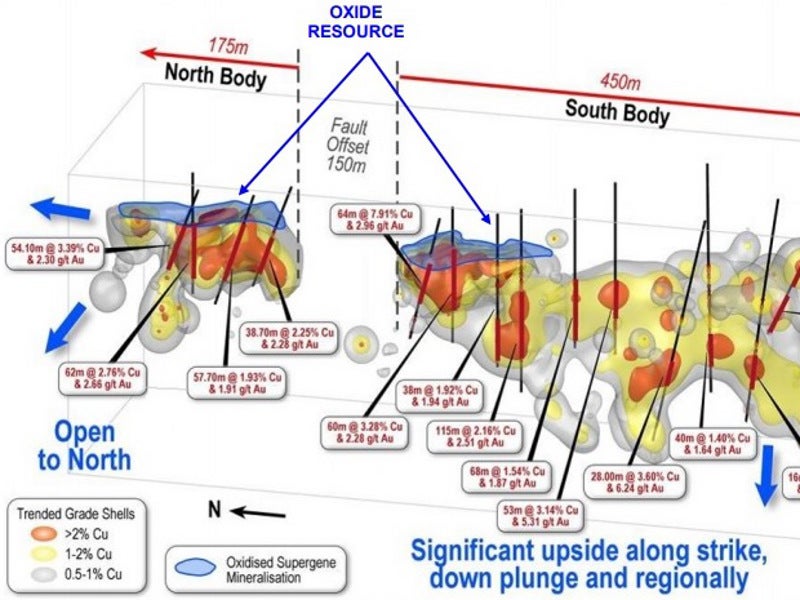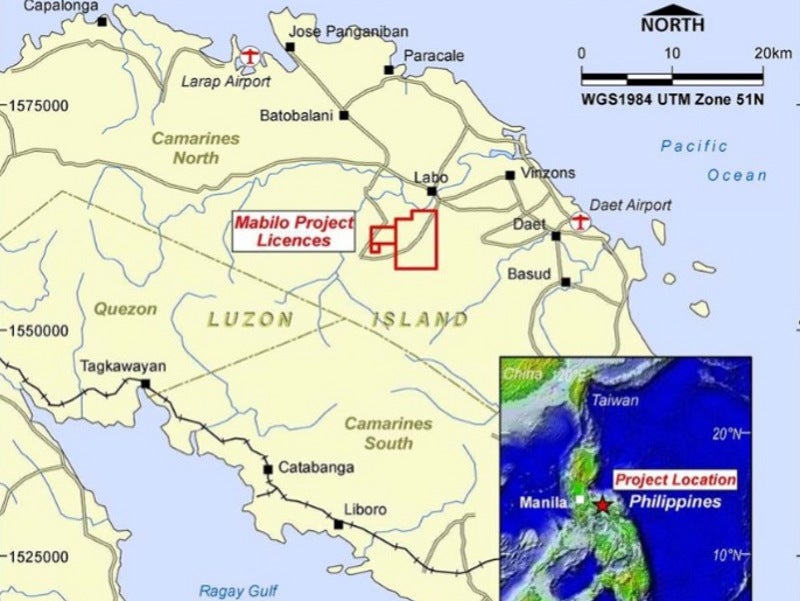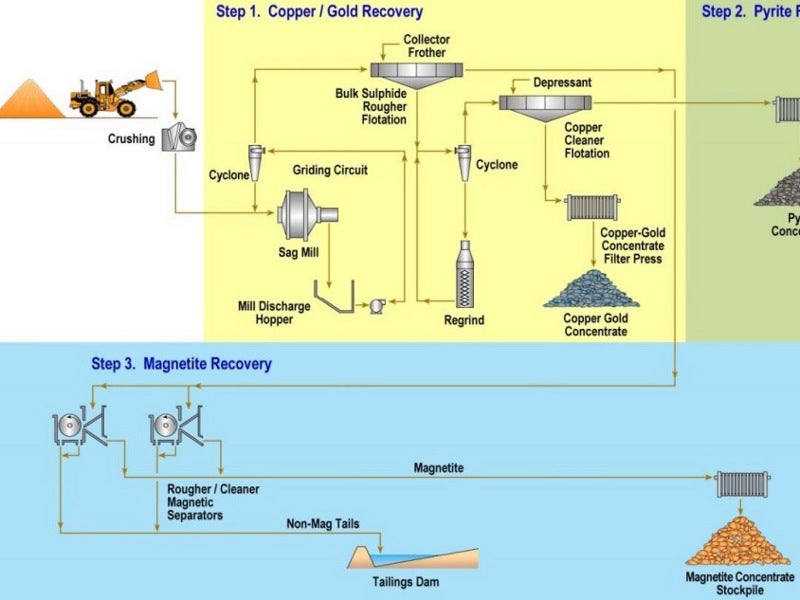The Mabilo copper-gold project is a high-grade copper-gold project located in Camarines Norte Province, Luzon, Philippines.
The project is being developed by a joint venture of Mt. Labo Exploration and Development Corporation (Mt. Labo) and Galeo Equipment. It will be managed by a project manager to be appointed by the joint venture partners. RTG Mining holds a 40% stake in Mt. Labo.
Feasibility study of the project was completed in March 2016 and approved by the Mines and Geosciences Bureau (MGB) in July 2019.
The project is expected to produce 18,000t of copper and 67,000oz of gold (approximately 160,000oz of gold-equivalent), through an initial mine life of eight years. It is estimated to have a capital expenditure of $161.4m.
Controversy related to Mabilo copper-gold project
Mt. Labo has filed an arbitration case in the Singapore International Arbitration Centre against its joint venture partner Galeo, with regards to the Mabilo project.
The arbitration was filed following breaching of the compromise agreements, reached in June 2016, as well as the joint venture agreement by Galeo. The arbitration matter is expected to begin in September 2019.
Mabilo copper-gold project location, geology, and mineralisation
The Mabilo copper-gold property is located in the Paracale district of the Pacific Cordillera arc belt. It is hosted within one granted exploration permit and two exploration permit applications.
The project hosts massive magnetite mineralisation comprising copper and gold grades as well as mineralised garnet skarn and calc-silicate altered rocks. The magnetite skarn is made up of marble and calcareous sediments in the hornfelsed contact zone of a quartz-diorite intrusion.
The Mabilo magnetite skarn deposit occurs in two separate parts, namely the North Mineralised Zone (NMZ) and South Mineralised Zone (SMZ).
Copper mineralisation is hosted within disseminated blebs and aggregates and in voids.
Mabilo copper-gold project reserves
The probable reserves at Mabilo project are estimated to be 7.79Mt, graded at 2.04g/t gold, 1.95% copper, 8.79g/t silver, and 45.5% iron. It is estimated to contain 511,000oz of gold and 152,000t of copper.
Mining at Mabilo copper-gold project
Conventional open-pit mining method, with stage-wise ore extraction, will be applied at the mine. The project will use 100t excavators (Komatsu PC 1250) and 40t articulated dump trucks (Caterpillar 745) to achieve initial access and mine development.
Other mining fleet equipment will include 100t excavators, 55t rigid haul trucks (Caterpillar 773), a 200t excavator (Komatsu PC 2000), and a fleet of 90t haul trucks (Caterpillar 777).
The initial focus of mining will be on the extraction of the supergene ore and the oxide gold cap ore within the southern part of the orebody. It will then be shifted to the recovery of fresh ore by making multiple-stage cutbacks in the starter pit.
Mabilo copper-gold project development phases
The Mabilo copper-gold project is proposed to be developed in two stages, with the first stage involving direct shipping ore (DSO) of near-surface oxide portion. The second stage includes the development of a 1.35Mtpa purpose-built facility to process initial ore.
The first stage operation is expected to produce three main high-grade products including copper and gold concentrate, gold pyrite concentrate, and magnetite concentrate. The products will be shipped to the Larap Port site.
The Mabilo processing plant is expected to produce a primary concentrate for an initial period of eight years, as part of the second stage.
Ore processing at Mabilo
The ore will pass through an open circuit, primary crushing unit, to obtain a size of 120mm. The crushed ore will be forwarded to a 120t capacity surge bin, the overflow of which will be conveyed to a dead stockpile of 20,000t.
The ore will then be reclaimed by a front-end loader (FEL) and ground to a size of 90µm in a semi-autogenous grinding (SAG) mill circuit.
The ground ore will be passed through bulk sulphide flotation for recovering copper sulphides and gold-bearing pyrite. It will then undergo two stages of cleaner flotation to retrieve copper sulphides into a copper concentrate and pyrite into a product for sale.
The resultant concentrate will be thickened and pressure-filtered to produce a copper concentrate filter cake. Pyrite thickening and pressure filtration will be conducted to produce a pyrite concentrate filter cake or discharging to tailings.
The sulphide tailings will be passed through magnetic separation to recover any magnetite present and will be converted into concentrate. The resultant magnetite concentrate will be thickened and pressure-filtered to produce a magnetite concentrate filter cake.
Infrastructure facilities
Access to the project is through a 15km-long all-weather road from the highway, close to the town of Labo.
Employees will be accommodated at a camp located approximately 3km south-east of the processing plant.
Power required for accommodation camp will be temporarily sourced from a 500kVA transformer, while a 500kVA generator will be used as a back-up.
Potable water for the camp will be sourced from local water bores, which will be processed in a containerised water treatment plant and ultra-violet sterilisation facility. Processing water will be sourced from three existing creeks located within the tenement.
Contractors involved
Lycopodium Minerals prepared the feasibility study of the copper-gold project, with support from other consultants such as CSA Global, Orelogy Consulting, Knight Piésold Consulting (KP), and Behre Dolbear.






